
Birding Down Under 17 Days
STYLE: LUXURY
Heritage Adventurer is an authentic small ship for expedition cruising offering an unforgettable exploration of New Zealand’s remote southern backyard on this special voyage. Discover the time-forgot rawness of wildlife rich Stewart and Ulva Islands before exploring the primordial majesty of Fiordland where clouds scud ragged peaks of glacier-cleaved mountains only accessible by expedition ship, and the rare opportunity to combine these iconic destinations on one voyage.
Cruising up the lower west side of New Zealand’s South Island, we prepare for the grand scale scenery of Fiordland. Exploring these remote ice-carved mountains, verdant forests and winding fiords, expect to encounter New Zealand Fur Seals, Dusky Dolphins, elusive birds and enjoy endless stunning vistas.
ITINERARY SUMMARY

DAY 1 QUEENSTOWN

Make your way to the hotel spending the first night of the expedition, an informal get together for dinner; an opportunity to meet fellow adventurers on your voyage and some of our expedition team.
DAY 2 PORT BLUFF

Today we enjoy breakfast in the hotel restaurant and have the morning free to explore Queenstown before returning to the hotel for lunch and departing for the Port of Bluff to embark your ship. There’s time to settle into your cabin and explore the ship. Join the expedition team in the Observation Lounge and up on the Observation Deck setting course to Campbell Island. Sail past Ruapuke Island and Stewart Island. Despite appearing quite small on most maps it is really quite large and has a 700 kilometre coastline. Seabirds that we may encounter at this early point in the voyage include: albatross, petrels, cormorants, gulls and Little Blue Penguins.
DAY 3 THE SNARES – NORTH EAST ISLAND
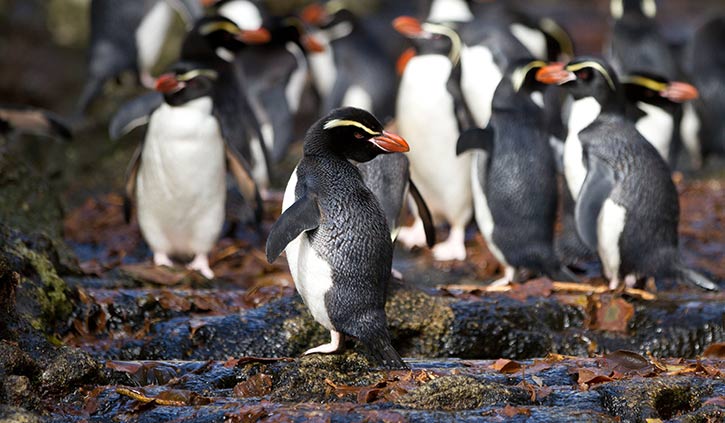
The closest Subantarctic Islands to New Zealand, they were appropriately called The Snares as they were once considered a hazard for sailing ships. Comprising of two main islands and a group of five islands called the Western Chain; they are uninhabited and enjoy the highest protection as Nature Reserves. It is claimed by some that these islands are home to more nesting seabirds than all of the British Isles together. We plan to arrive in the morning, and as landings are not permitted, we will Zodiac cruise along the sheltered eastern side of the main island if the weather and sea conditions are suitable. In the sheltered bays, we should see the endemic Snares Crested Penguin, Snares Island Tomtit and Fernbirds. There are hundreds of thousands of Sooty Shearwaters nesting on The Snares; the actual number is much debated. Buller’s Albatross breed here from early January onwards. There will be opportunities to view the forests of large tree daisy Olearia lyallii which forms a canopy over much of the island group.
DAY 4 AUCKLAND ISLANDS – ENDERBY ISLAND
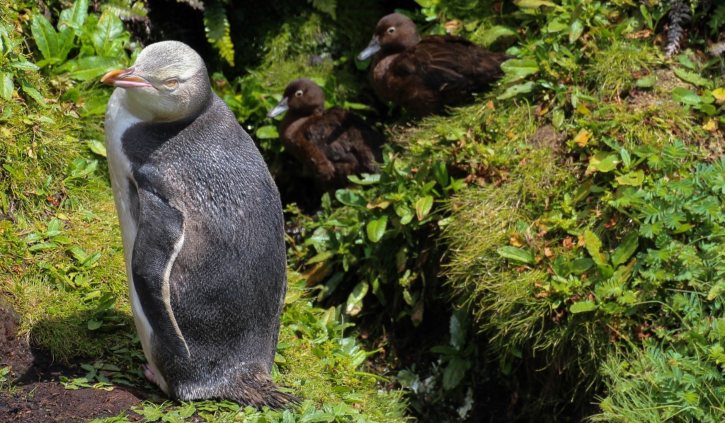
DAY 5 AT SEA
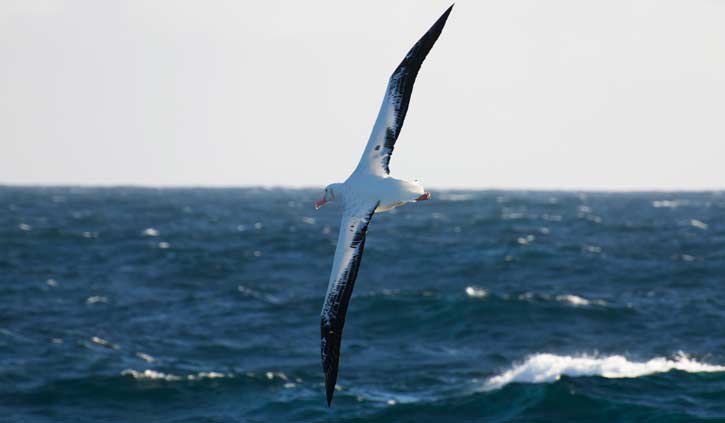
As we make our way through an area known as the Furious Fifties in the tumultuous Southern Ocean, we will learn more about the flora and fauna as we prepare for our arrival at Macquarie Island. En route there are great birding opportunities which may include the Wandering Albatross, Royal Albatross, Black-browed Albatross, Light-mantled Sooty Albatross, Salvin’s Albatross, Grey-headed Albatross, Northern and Southern Giant Petrel, Sooty Shearwater and Little Shearwater. We will endeavour to spot the Fairy Prion, Fulmar Prion and Antarctic Prion – never an easy task – but we should get some great views. Other species to be on the lookout for include the Soft-plumaged Petrel, Mottled Petrel, White-headed Petrel, Grey-faced Petrel, White-chinned Petrel, Grey-backed Storm-Petrel, Wilson’s Storm-Petrel and the Black-bellied Storm-Petrel.
DAYS 6 & 7 MACQUARIE ISLAND

You’ll discover why we spend two days exploring this amazing Island. It was one of the first of the Subantarctic Islands to obtain World Heritage Status. One of the few places where mid-ocean crustal rocks are exposed at the surface due to the collision of the Australian and Pacific Plates. Discovered in 1810 the island is now predator free and both the birds and plants are responding. It is amazing to witness the regeneration and the increase in the number of birds. Macquarie Island is home to four species of penguin, Kings, Royals, Gentoo and Rockhopper. The Royal Penguin occurs nowhere else in the world. During our visit we will land at two sites (subject of course to weather and sea conditions) and you will get a chance to see, observe and photograph all four species, although the Rockhopper is much harder to capture than the others. Macquarie also has a large population of Southern Elephant Seals. Pups are born in October and weaned in November when the breeding adults return to sea. The weaners and sub adults lie around on the beaches. The weaners go to sea sometime in January, running the gauntlet of Orcas or Killer Whales who are waiting offshore. We plan a landing at the Australian Antarctic Research Base at Buckles Bay where you will be able to meet with scientists and base staff. It’s one of the longest continuously occupied bases in the Subantarctic.
DAY 8 AT SEA
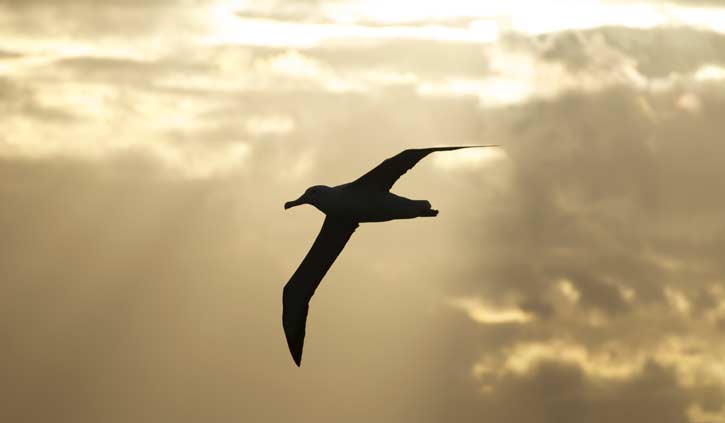
DAY 9 CAMPBELL ISLAND – PERSEVERANCE HARBOUR

New Zealand’s southernmost Subantarctic territory. Discovered in 1810, it was soon occupied by sealers who introduced rats and cats. Farming followed from 1895 to 1934 when it was abandoned. In the early 1970s the removal of farm animals commenced and all were removed by 1990. The vegetation recovered quickly and the cats died out naturally. With the island declared predator free, the way was clear to reintroduce the endangered Campbell Island Flightless Teal, which had been rediscovered on an offshore island in 1975. Snipe, which were formerly unknown from the island but were discovered on another offshore island, recolonised the islands themselves. The vegetation is flourishing and spectacular. A number of options which will enable you to explore the island including an extended walk to Northwest Bay. There’ll be an easier walk to the Col Lyall Saddle. Both options allowing the opportunity to enjoy the Southern Royal Albatross which nest here in large numbers. We also visit areas of the island which contain outstanding examples of the megaherbs for which the island is renowned.
DAY 10 AT SEA

DAY 11 ANTIPODES ISLANDS
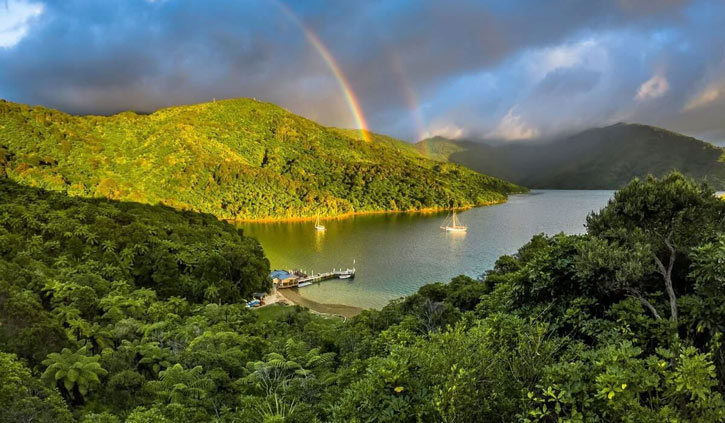
The Antipodes group of islands is the most isolated and perhaps the least known of New Zealand’s Subantarctic Islands. Sealers lived here in the decades immediately after their discovery in 1806. Mice are the only introduced animal on the islands but efforts to eradicate them will hopefully see that their days are numbered. The islands are of volcanic origin, but are heavily eroded especially the western shoreline. The largest of the group is Antipodes Island. Landings are not permitted so we plan to cruise, along the coastline by Zodiac where we have a good chance of seeing the Antipodes Parakeet, the largest of New Zealand’s parakeets. This species has an entirely green head. We will also look for the Reischek’s Parakeet, a subspecies of the Red-crowned Parakeet found in the Auckland Islands and on the Chatham Islands. We also see the Antipodes subspecies of the New Zealand Pipit. Good views of both Erect-crested and Rockhopper Penguins can be expected along the coast where they often breed in mixed colonies.
DAY 12 BOUNTY ISLANDS

We arrive at the incongruously named Bounty Islands, the remote northernmost of the five New Zealand Subantarctic groups; they were discovered by Captain Bligh just months before the infamous mutiny. Here inhospitable granite knobs, tips of the submerged Bounty Platform, are lashed by the Southern Ocean. They are home to thousands of Salvin’s Albatross, Erect-crested Penguins, Fulmar Prions and the endemic Bounty Island Shag – the world’s rarest. We plan to arrive in the early morning and if conditions are suitable we will cruise by Zodiac around the granite outposts to take a closer look at the birds which breed there. New Zealand Fur Seals which were almost hunted to extinction in the Subantarctic Islands are present in large numbers. Sailing towards the Chatham Islands there are opportunities to see a good selection of birdlife as we sail. These should include Wandering Albatross, Northern Royal Albatross, Mottled Petrel, Soft-plumaged Petrel, Broad-billed Prion, White-chinned Petrel and Black-bellied Storm-Petrel as well as Wilson’s Storm-Petrel. Other possible sightings include White-capped Albatross, Northern Giant Petrel, Cape Petrel, Antarctic Fulmar, Sooty Shearwater, Little Shearwater and Grey-backed Storm-Petrel. We will also start to keep a lookout for the Chatham Island Petrel.
DAY 13 PYRAMIND ROCK AND SOUTH EAST ISLAND

Excellent opportunities for pelagic birding today, look out for the Chatham Island Petrel. In the past we’ve observed the very rare Chatham Island Taiko. Endemic to the Chatham Islands, the Chatham Island Taiko – also known as the Magenta Petrel (among New Zealand’s most endangered species one of the world’s rarest seabirds). This afternoon we cruise around spectacular Pyramid Rock, a basalt outcrop south of Pitt Island. The only breeding place of the Chatham Island Albatross. During the afternoon we arrive at South East Island. This has to be one of the world’s greatest nature reserves and landings are not permitted. We should obtain good views of the very rare New Zealand Shore Plover and Chatham Island Oystercatcher from the Zodiacs as we cruise along the coast. We should also see the Pitt Island Shag which nests on the island.
DAY 14 CHATHAM ISLANDS

DAYS 15 & 16 AT SEA
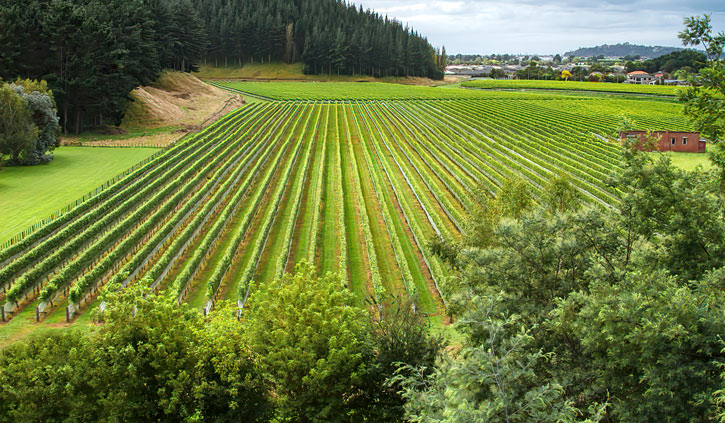
En route to Bluff we will cross the Chatham Rise, a large, relatively shallowly submerged part of the Zealandia continent that stretches east from near the South Island of New Zealand. Nutrient rich waters from the south mix with warm northern waters and there is an overlap between northern pelagic species and birds from southern latitudes, so we can expect great pelagic sightings. Species we expect to encounter include Wandering Albatross, Royal Albatross, Black-browed Albatross, White-capped Albatross and Salvin’s Albatross. Petrel species we should be able to identify are the Northern Giant Petrel, Cape Petrel, Westland Black Petrel, White-chinned Petrel, Great-winged Petrel, Grey-backed Storm-Petrel, Whitefaced Storm-Petrel, the DivingPetrel and Cook’s Petrel. Additional birdlife will include species of shearwater seabirds. These tubenose birds fly with stiff wings and use a ‘shearing’ flight technique to move across wave fronts with the minimum of active flight. Photographic opportunities can include Flesh-footed Shearwater, Buller’s Shearwater, Sooty Shearwater and Little Shearwater. Small petrels on the horizon and close by include Fairy Prion and Broad-billed Prion. We will recap the highlights of our expedition and enjoy a farewell dinner tonight as we complete the last few miles of our journey.
DAY 17 INVERCARGILL
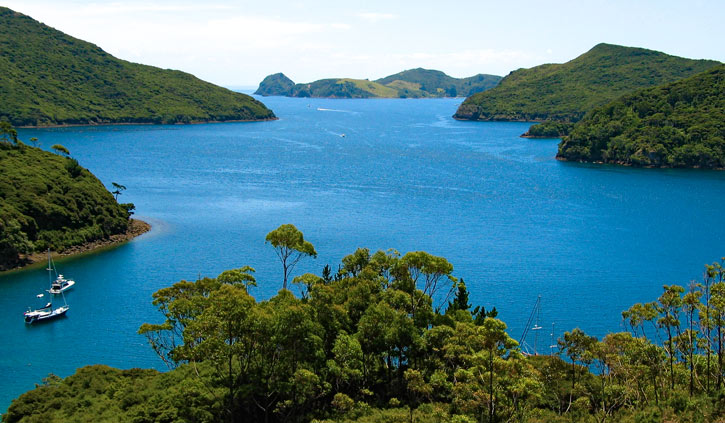
Arrive Port of Bluff, disembark and farewell fellow voyagers taking a complimentary coach transfer to either Invercargill or Queenstown Airports. In case of unexpected delays due to weather and/or port operations we ask you not to book any onward travel until after midday from Invercargill and after 3pm from Queenstown.


